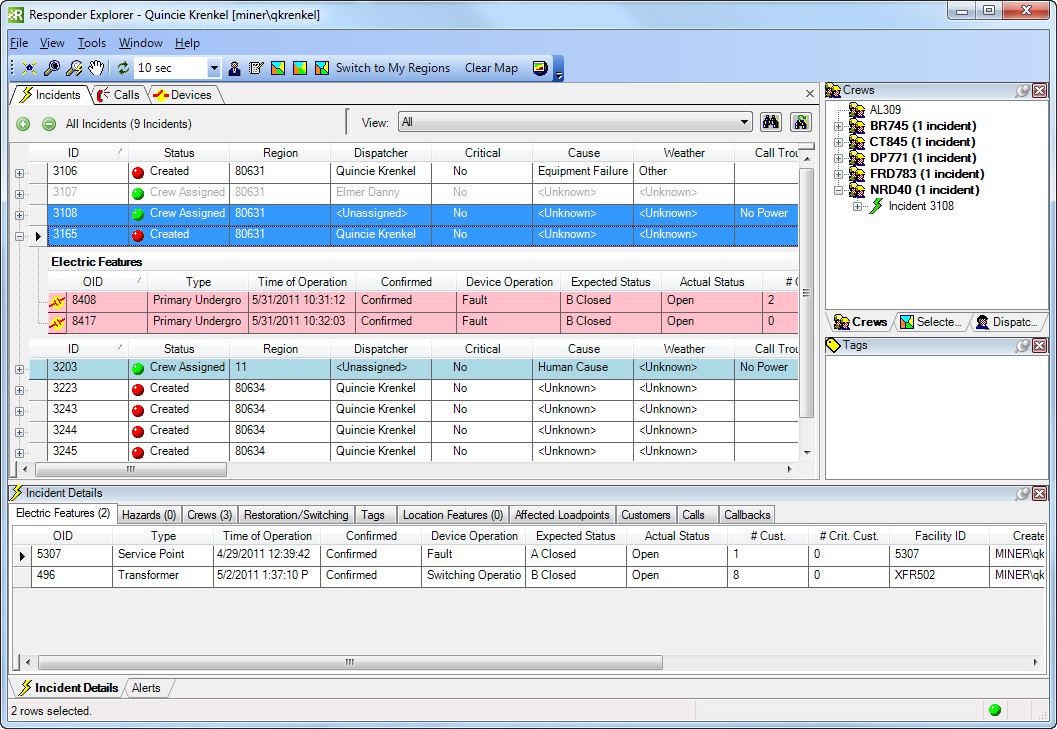

Version: 10.2.1c and 10.2.1c SP3 |
| Responder Overview > Manage Incidents > Edit Incident in Responder Explorer > Consolidate Incidents |
Available in Responder Explorer.
The Consolidate tools allow you to manually combine two or more incidents into one. Depending on whether the incidents are confirmed, Responder combines the faults or cuts into one incident or locates a common upstream device and places the incident there. Incidents containing electric features (faults or cuts), location features (non-electric) or hazards may be consolidated as long as the Confirmation Status is equal for both incidents (e.g., both confirmed, both unconfirmed or probable).
The Probable status is treated as Unconfirmed. An incident with a Probable status consolidated with an Unconfirmed incident will end up with a Probable status.
When incidents are consolidated, the Remarks fields (Dispatch and Field) are also consolidated and labeled with FIELD and/or DISPATCH. A carriage return is placed between the Dispatch and Field remarks to separate them. The Responder Explorer grid displays only the first five lines. Edit the incident to view all remarks if they exceed five lines.
If both Owners are set to <Unassigned>, then the Owner will default to the user performing the consolidation. If one is unassigned or both are assigned to different people, then the owner of the older incident becomes the owner of the consolidated incident. You may select an Owner on the Edit Consolidated Incident screen.
Multi-Customer Load Point: If an incident on a multi-customer load point (e.g., apartment building) is rolled upstream, all customers are included in the new upstream incident. Should the new upstream incident be cancelled, the original downstream incident will only include those customers who called. Any changes made (e.g., additional customers checked to indicate outage) using the Select Affected Customers tool will be lost.
The way incidents are consolidated depends on their confirmed status as well as their feeder:

|
|

Figure 1, The incidents highlighted in blue will be consolidated.

Figure 2, The Edit Consolidated Incident screen. Note that the values in the Total and Critical customers fields are the sum of the values in the corresponding fields for the individual incidents.
 |
Consolidation and the Address field: Note that when consolidating, the final incident will have the address of the first device in the Electric Features list. You can use the Use As Incident Address tool to assign the address of a different device. |

Figure 3, Because both original incidents were confirmed, the fault devices are combined into a single incident.